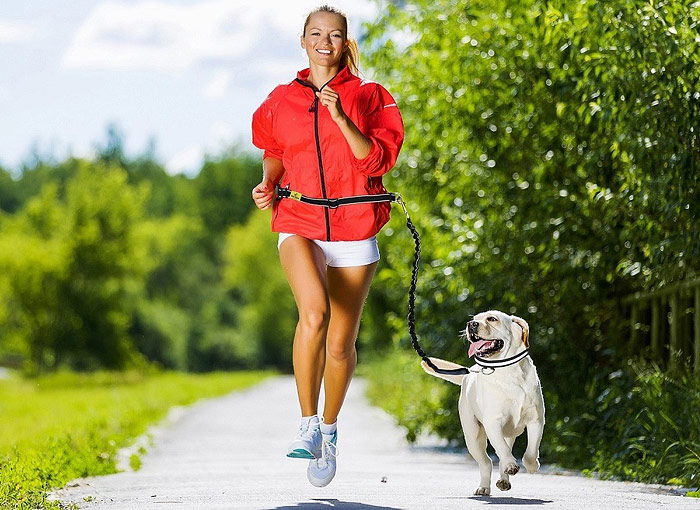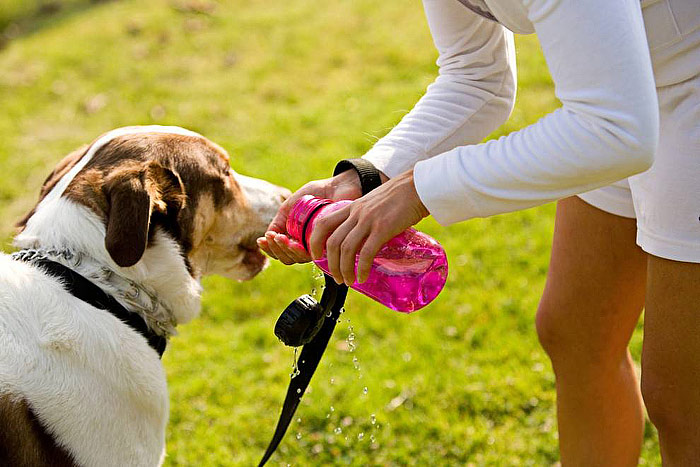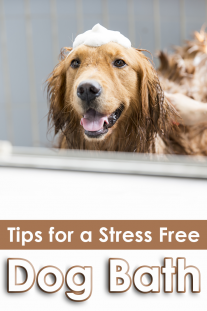
There’s more to running with a dog than fastening a leash and heading to Central Park for a jog. Here are nine tips to review before you take your dog on a run.
Consider Your Dog’s Age and Breed
In most cases it’s best to wait until your dog is one to two years old – depending on the breed – before running together. Dogs’ muscles and bones need to be fully developed to avoid putting stress on them while they’re still growing. Check with your vet, though: Smaller dogs are often physically ready to start running before larger dogs. Beyond the dog’s physical abilities, keep his or her maturity and training levels in mind. Before you run together, your dog should be comfortable on a leash, not skittish around other people or dogs, and trained to respond to his or her name when called. Your dog should also be at the point that he or she respects you as the dominant leader in the relationship. Even though it may seem like the pup sometimes makes the rules, you are in charge.
Not all dogs are interested in running. Retrievers, shepherds, terriers, vizslas, and Labradors can be great running buddies. But really big breeds (such as mastiffs and Great Danes) or really small breeds (such as Chihuahuas, pugs, and French bulldogs) may not be up for it or built for it.
Get the Right Gear
Your dog’s everyday collar and leash probably won’t be secure enough when you’re running together. It’s best to invest in something sturdier. The leash should extend around two to three feet from you to keep a safe distance. A leash that’s too short won’t allow you or your dog any freedom. And a leash that’s too long can be hazardous for you, your dog, and the people around you. (Too much slack can get in the way of other people or objects.) Check out Cardio Canine or The Buddy System for great hands-free leash options that tie around your waist.
Always bring plastic waste bags along for a run so you can clean up after your dog, and throw a few treats in your pocket to reward good behavior.
Plan Your Route
Your dog’s paws are made for walking outside, but they aren’t exactly fit for a pair of cushy running shoes like ours. Before heading out, choose a route that’s close to home and not too crowded with people or cars. Consider the possibility of harmful obstacles – such as broken glass on city streets or hot asphalt near the beach – and stick to well-maintained public parks when possible. Soft surfaces, including grass, dirt, or trails, feel better on your pup’s paws than pavement or concrete. And avoid gravel, which can get stuck between a dog’s paws and cause pain or irritation.
If you don’t plan to carry water with you (in a handheld water bottle, for example), pick a route with water fountains, and try to stick to shaded areas as much as possible to avoid overheating.
Start Short and Slow
Your body may be conditioned to bust out a 10K like it’s nothing, but your dog isn’t there yet. Start slow and easy. The first few times out, run for just 10 minutes at a time and build gradually from there, a few times a week. Notice if your dog’s breathing becomes labored or if she constantly tries to lie down. The dog won’t be able to tell you when she is tired, so pay extra attention to form and breathing. Build your dog’s stamina gradually to avoid exhaustion and potential injury.
Mind the Weather
You may be one of those hardcore runners for whom weather presents no challenge. Rain, sleet, snow – you’re game. But stick to fair-weather running, at least at first. Since your dog doesn’t have a voice, she won’t be able to tell you if she’s too hot or cold, or if her paws are freezing from the conditions. Once you get a feel for the conditions your dog prefers, you can experiment. When it’s cold, for example, equip your pup with a jacket or light sweater and a set of dog booties. If Fido refuses to slip on some booties (not all dogs appreciate fancy footwear), be mindful of road conditions. Excess salt on the ground can irritate paws. Never force your dog to run in excessive heat or extreme weather, and generally avoid rainy conditions, which can create slippery surfaces.
Watch Your Whereabouts
After running, check your dog for ticks or stones and lesions in the paws. If you do find a tick on your dog, don’t remove it with your hands. Use tweezers or thin pliers to grab the tick as close to the skin as possible and pull it directly off the dog. (Check yourself for ticks while you’re at it.) Try to avoid areas with lots of wild animals (such as raccoons), which can be a distraction to your dog as well as a danger to both of you. Be wary of your timing as well; some animals are most active at dawn and dusk.
Stay Hydrated
The bigger the dog, the more water it requires. A general rule of thumb: your dog should drink roughly 0.5 to 1 ounce of water per pound per day. (So a 65-pound dog, for example, needs 33 to 65 ounces of water per day.)
Runs are in addition to your dog’s daily hydration schedule, so stop for short water breaks on the run if you’re out for more than 30 minutes. You may want to carry a collapsible water bowl too. Keep the weather in mind: hot days call for additional hydration. Your dog’s hydration needs aren’t all that different from yours. Try to prevent your dog from drinking too much within the hour before you go running; like with humans, it can lead to an upset, sloshy stomach while your dog is running.
Remember, It’s About the Dog, Not You
Tempo runs, interval workouts, or any type of run that’s an essential part of your training plan should be done solo or with a human companion. Running with your dog is a time to bond and enjoy each other’s company – not to hit race pace. Enjoy the quality time away from real-world distractions and really tune in to one another. Before you know it, your best friend may be the best running buddy you’ve ever had!
Rest and Recover
Pay extra attention to your dog’s behavior after your run. Always include a five- to ten-minute cool-down walk at the end of your run to get both your heart rates back to normal. Watch for signs of soreness or limping in the days that follow your run. If it’s hot out, help your dog cool down with a damp towel.
Final Thoughts
Running with your dog should be fun for you and your dog. Teaming up and running with your beloved pooch shouldn’t add stress to either of your lives. It’s a time to bond, get some exercise, and enjoy the outdoors together. So lace up, leash up, and enjoy!




Leave a Reply